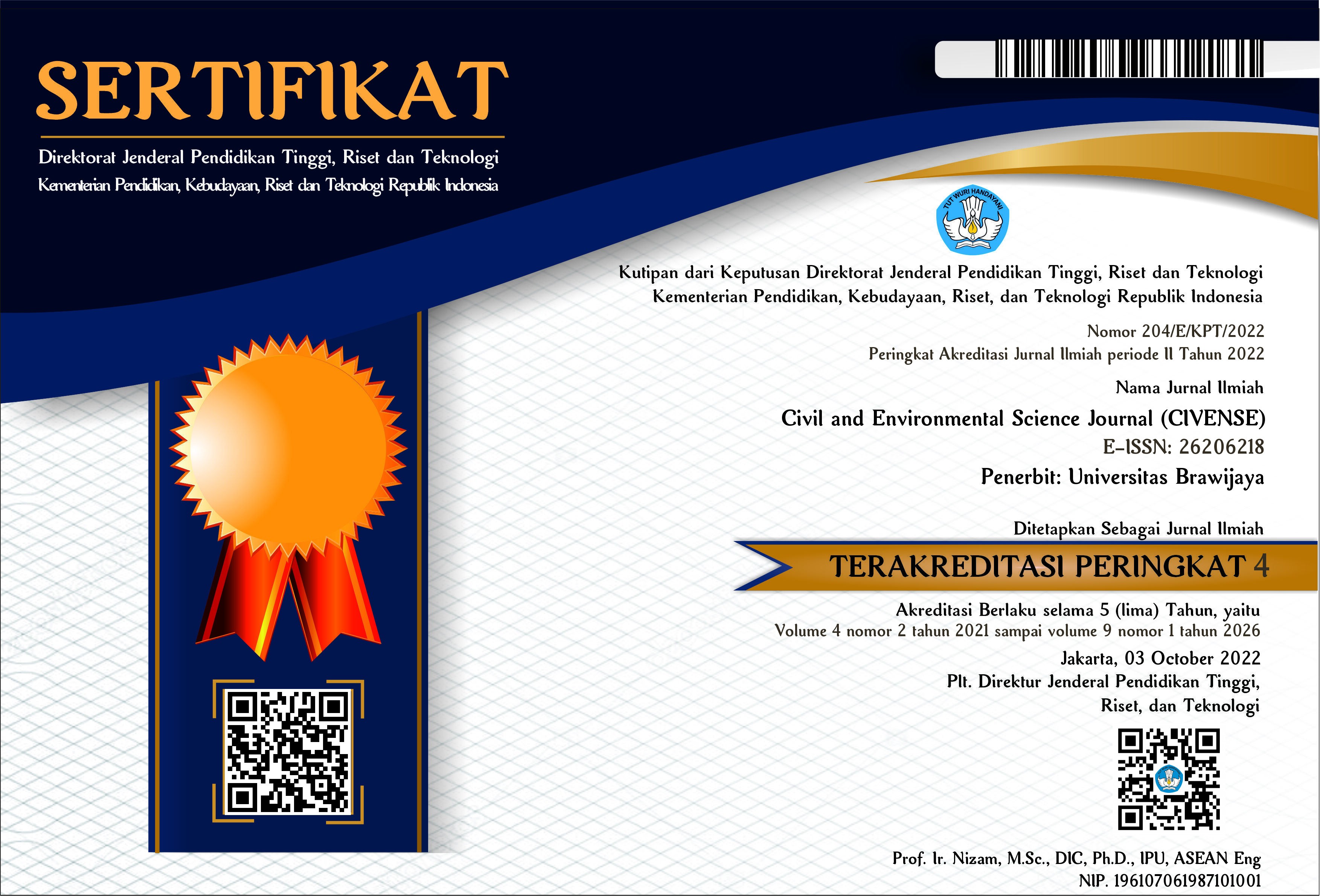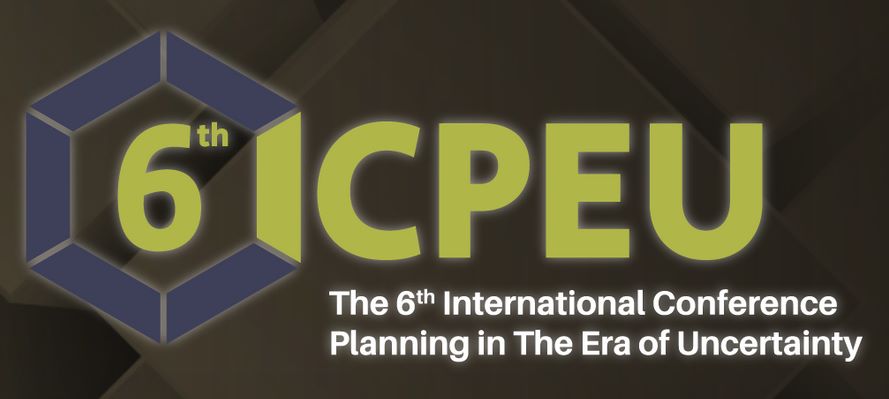Correlation Between Mobility and COVID-19 Cases in Surabaya City, Indonesia
DOI:
https://doi.org/10.21776/ub.civense.2021.00402.5Keywords:
Activity, Correlation, COVID-19, Mobility, TransportationAbstract
The number of COVID-19 cases in Surabaya was one of the highest in Indonesia at the beginning of the pandemic. This study aims to determine the mobility and activity patterns of the people of Surabaya during the COVID-19 pandemic and find a correlation between people mobility and the number of COVID-19 cases in Surabaya City using Pearson's Coefficient of Correlation (PCC). The data used are mobility data at Gubeng Station, Purabaya Terminal, Waru Utama toll gate, and COVID-19 Community Mobility Reports. The mobility pattern of the people of Surabaya City in 2020 is divided into 5 phases, namely the normal condition phase (F0), the pandemic's initial phase (F1), the PSBB phase (F2), the transition of AKB phase (F3), and the AKB phase (F4). This study indicates that the number of people in transit stations and residential areas has a high correlation with the number of COVID-19 cases. In addition, the type of mobility that has the most effect on increasing the number of COVID-19 cases is the mobility of bus transportation.
References
R. Djalante et al., “Review and analysis of current responses to COVID-19 in Indonesia: Period of January to March 2020,” Prog. Disaster Sci., vol. 6, p. 100091, 2020, DOI: 10.1016/j.pdisas.2020.100091.
Gugus Tugas Percepatan Penanganan COVID-19, “Laporan Kasus Harian Satgas Penanganan COVID-19,” 2021. [Online]. Available: https://covid19.go.id/peta-sebaran.
S. M. Iacus, C. Santamaria, F. Sermi, S. Spyratos, D. Tarchi, and M. Vespe, “Human mobility and COVID-19 initial dynamics,” Nonlinear Dyn., vol. 101, no. 3, pp. 1901–1919, 2020, DOI: 10.1007/s11071-020-05854-6.
M. U. G. Kraemer et al., “The effect of human mobility and control measures on the COVID-19 epidemic in China,” Science (80-. )., vol. 368, no. 6490, pp. 493–497, 2020, DOI: 10.1126/science.abb4218.
A. Tirachini and O. Cats, “COVID-19 and public transportation: Current assessment, prospects, and research needs,” J. Public Transp., vol. 22, no. 1, pp. 1–34, 2020, DOI: 10.5038/2375-0901.22.1.1.
Google, “Google COVID-19 Community Mobility Reports,” 2021. https://www.google.com/covid19/mobility/.
S. Santoso, Menguasai Statistik dengan SPSS 25. Jakarta: PT. Elex Media Komputindo, 2018.
Dinas Perhubungan Kota Surabaya, “Data Arus Bus dan Penumpang AKAP AKDP Unit Terminal Purabaya Tahun 2020,” 2020.
PT. Kereta Api Indonesia DAOP VIII Surabaya, “Volume Penumpang Surabaya Gubeng Tahun 2020,” 2020.
PT. Jasa Marga Cabang Surabaya Gempol, “Data Lalu Lintas Tol Surabaya Gempol Tahun 2020,” 2020.
Downloads
Published
How to Cite
Issue
Section
License
Copyright (c) 2021 Civil and Environmental Science Journal (Civense)

This work is licensed under a Creative Commons Attribution-NonCommercial 4.0 International License.
Authors who publish with this journal agree to the following terms:
Authors retain copyright and grant the journal right of first publication with the work simultaneously licensed under a Attribution-NonCommercial 4.0 International License that allows others to share the work with an acknowledgement of the work's authorship and initial publication in this journal.
Authors are able to enter into separate, additional contractual arrangements for the non-exclusive distribution of the journal's published version of the work (e.g., post it to an institutional repository or publish it in a book), with an acknowledgement of its initial publication in this journal.
Authors are permitted and encouraged to post their work online (e.g., in institutional repositories or on their website) prior to and during the submission process, as it can lead to productive exchanges, as well as earlier and greater citation of published work (See the Effect of Open Access).














